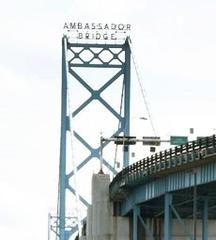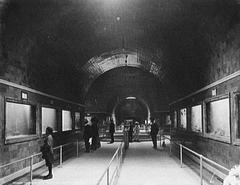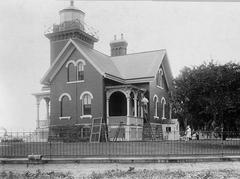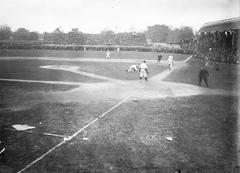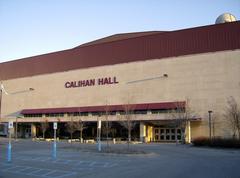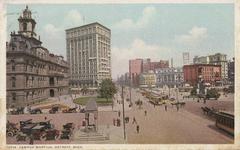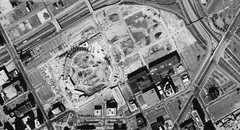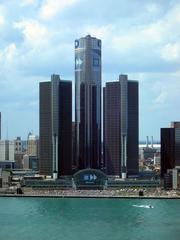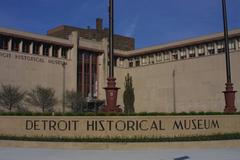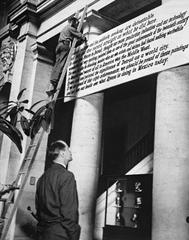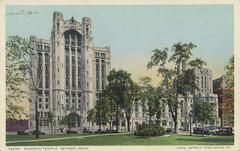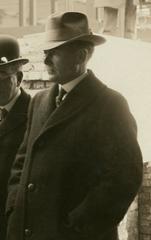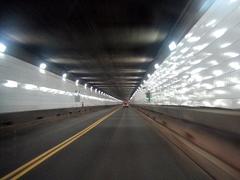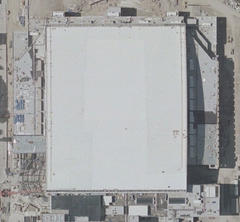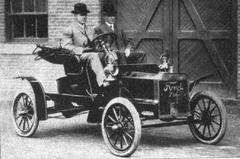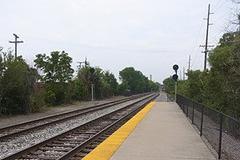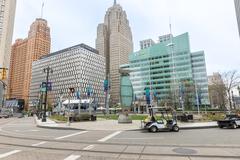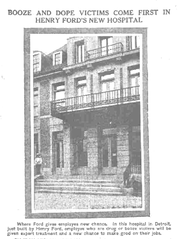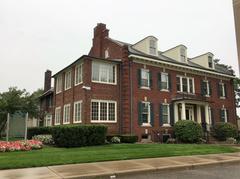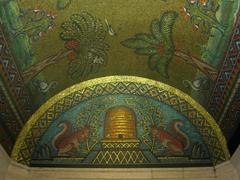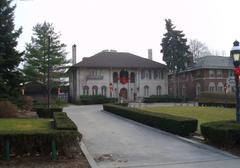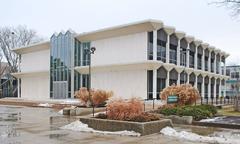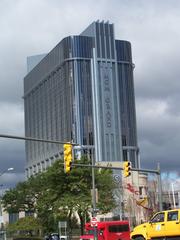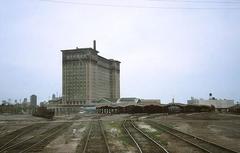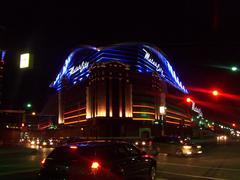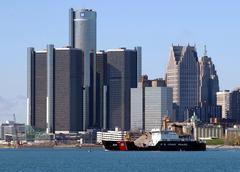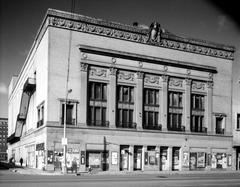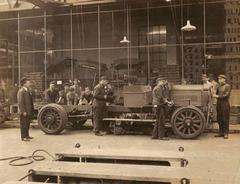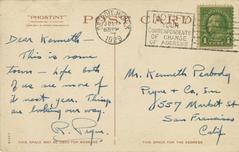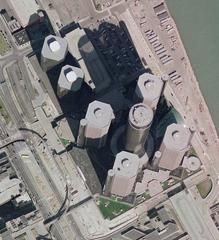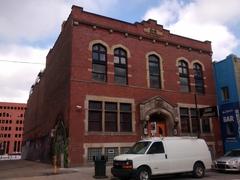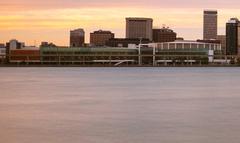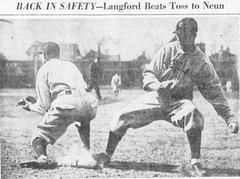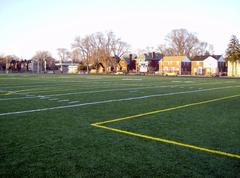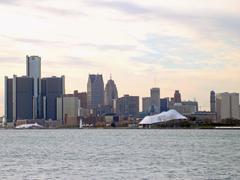
The Kean Detroit: Visiting Hours, Tickets, and Historical Significance Guide
Date: 04/07/2025
Introduction
The Kean Apartments, located at 8925 East Jefferson Avenue in Detroit, Michigan, are a distinguished example of early 20th-century Art Deco residential architecture and a testament to the city’s rich industrial and cultural history. Constructed in 1931 during Detroit’s economic heyday, The Kean was designed by architect Charles Noble to offer luxury living for the city’s burgeoning professional class. Its striking façade, adorned with terra cotta ornamentation, marble accents, and whimsical gargoyles, reflects Detroit’s golden era of apartment construction. Listed on the National Register of Historic Places since 1985, The Kean stands as both an architectural gem and a symbol of Detroit’s resilience and transformation (Historic Detroit; Detroit 1701; Wikipedia: The Kean).
While primarily a private residence, The Kean attracts visitors who admire its exterior and appreciate its place in Detroit’s architectural landscape. This comprehensive guide explores the building’s history, design, cultural context, visitor information, and tips for making the most of your visit to this iconic Detroit landmark (Detroit Living; Earth Trekkers; Visit Detroit).
Table of Contents
- Early 20th Century Detroit and the Rise of Apartment Living
- Architectural Vision and Design
- The Impact of the Great Depression
- Preservation and Historical Recognition
- The Kean in Detroit’s Urban Evolution
- Visitor Information: Access, Tours, and Nearby Attractions
- Notable Features and Lasting Legacy
- Timeline of Key Events
- Cultural and Social Context
- Frequently Asked Questions (FAQ)
- Conclusion and Final Tips
- References
Early 20th Century Detroit and the Rise of Apartment Living
The Kean emerged during a period when Detroit was transforming into a booming metropolis, thanks to the automotive industry’s explosive growth. By 1930, Detroit’s population exceeded 1.5 million, making it the nation’s fourth-largest city (Detroit History Timeline). The city’s professional class sought modern, upscale housing close to commercial hubs, prompting the development of luxury apartments along East Jefferson Avenue.
The Kean responded to this demand, offering sophisticated amenities and a prime location near downtown, Belle Isle Park, and the riverfront. Apartment living became synonymous with urban modernity and convenience, marking a shift from single-family homes to communal, high-rise lifestyles (The Kean Apartments).
Architectural Vision and Design
Designed by Charles Noble, The Kean exemplifies Art Deco style, blending vertical lines, geometric ornamentation, and classical elements. The sixteen-story building features a bold orange terra cotta entryway, marble Corinthian columns, and a distinctive red-and-white checkerboard roofline adorned with gargoyles (Historic Detroit; Wikipedia: The Kean).
Inside, the lobby is a showcase of luxury: wood-paneled walls, marble floors, grand staircases, and stained glass windows. The ceiling’s marble rosettes and elaborate detailing further highlight the era’s commitment to craftsmanship (Buildings DB). Romanesque arches and decorative motifs add layers of architectural sophistication, making The Kean a standout among Detroit’s historic buildings.
The Impact of the Great Depression
Completed as the Great Depression began in 1931, The Kean was the last major apartment building constructed on East Jefferson Avenue until after World War II (Historic Detroit). Despite economic hardship, the building maintained its status as a desirable address, surviving through decades of citywide change. Its continued use is a testament to its robust design and prime location.
Preservation and Historical Recognition
The Kean’s architectural and cultural significance was formally recognized in 1985 with its addition to the National Register of Historic Places (Wikipedia: The Kean; Buildings DB). This status protects the building and acknowledges its importance in Detroit’s narrative of prosperity, struggle, and renewal.
The Kean in Detroit’s Urban Evolution
The Kean is part of Detroit’s rich architectural tapestry, alongside landmarks like the Lee Plaza and Guardian Building. Its construction reflects a time of optimism and growth, while its preservation symbolizes Detroit’s enduring spirit (The Kean Apartments; The Kean - Detroit Living). Today, the building is both a desirable residence and a tangible link to the city’s storied past.
Visitor Information: Access, Tours, and Nearby Attractions
Access and Visiting Hours:
The Kean is a private residential building, and regular public access is not available. Visitors can admire the exterior from East Jefferson Avenue at any time. Interior access—such as to the lobby—is occasionally offered during special events like Doors Open or heritage tours. Check with local organizations or Preservation Detroit for event schedules.
Tickets and Tours:
There are typically no fees to view the building’s exterior. Interior access during special events may require tickets, usually $10–$25. Advance registration is recommended.
Accessibility:
The entrance features both steps and a wheelchair-accessible ramp. Common areas are generally accessible, though some historic features may pose minor obstacles.
Getting There:
- By Car: Metered parking is available on East Jefferson Avenue.
- Public Transit: Served by DDOT bus routes #9 and #67 (DDOT Routes).
- Cycling: Bike-friendly routes connect to the nearby Riverwalk (Detroit Riverwalk).
- Rideshare: Uber and Lyft operate citywide.
Nearby Attractions:
- Detroit Riverwalk: Scenic, walkable, and bike-friendly (Detroit Riverwalk).
- Belle Isle Park: Features gardens, the aquarium, and a conservatory.
- Detroit Institute of Arts (DIA): World-class art museum (Detroit Institute of Arts).
- Historic Indian Village: Noted for early 20th-century mansions and tree-lined streets.
Notable Features and Lasting Legacy
The Kean’s orange terra cotta, checkerboard roofline, and gargoyles distinguish it from contemporaries. Its layout—four apartments per floor across sixteen stories—was both modern and efficient at the time. The building’s continued use as a residence and its historic designation ensure ongoing appreciation and preservation (Buildings DB; Historic Detroit).
Timeline of Key Events
- 1930–1931: Construction and completion.
- 1931: Opens as a luxury apartment building.
- 1931–1945: Last major residential construction on East Jefferson until after WWII.
- 1985: Added to the National Register of Historic Places (Wikipedia: The Kean).
- Present: Continues as a private residential property (The Kean - Detroit Living).
Cultural and Social Context
The Kean’s history is woven into Detroit’s broader narrative of migration, cultural diversity, and urban transformation. Its residents have reflected the city’s multicultural fabric, including significant African American, Arab, Bulgarian, and Belgian communities (Detroit, Michigan Travel Guide). The building stands as a living piece of Detroit’s architectural and social heritage, embodying the city’s adaptability and community spirit.
Frequently Asked Questions (FAQ)
Q: Can visitors tour The Kean’s interior?
A: Public tours are rare and only available during special events. Check with Preservation Detroit or local heritage groups.
Q: Is there an entry fee?
A: No fee for exterior viewing. Special tours may require tickets ($10–$25).
Q: Is The Kean wheelchair accessible?
A: Yes, a ramp is available at the entrance, and common areas are generally accessible.
Q: Are there guided tours?
A: Occasionally, during citywide events or by arrangement with heritage organizations.
Q: What are the best nearby attractions?
A: Belle Isle Park, Detroit Riverwalk, DIA, and Historic Indian Village.
Conclusion and Final Tips
The Kean Apartments stand as a vibrant symbol of Detroit’s architectural legacy and cultural resilience. While interior access is limited, the building’s exterior, historical status, and location along East Jefferson Avenue make it a must-see for any visitor interested in Detroit’s rich history. To enhance your visit, plan around special events for lobby access, use public transportation or bike routes, and explore nearby landmarks.
Remember to respect residents’ privacy and consult local organizations for updates on public tours or open houses. For deeper exploration, download the Audiala app for curated tours, maps, and insider tips, and stay connected with local heritage groups (Preservation Detroit; Detroit Focus; Audiala).
References
- The Kean Apartments in Detroit: History, Architecture, and Visitor Information, 2025, Detroit1701
- Visiting the Kean Apartments: Detroit’s Iconic Art Deco Residential Landmark, 2025, Earth Trekkers
- Visiting The Kean in Detroit: Hours, Tickets, and Neighborhood Guide, 2025, Visit Detroit
- The Kean Detroit: Visiting Hours, Tickets, and Nearby Historical Attractions, 2025, Preservation Detroit
- The Kean - Wikipedia, 2025, Wikipedia
- Historic Detroit: The Kean Apartments, 2025, Historic Detroit
- Buildings DB: The Kean Building, 2025, Buildings DB
- Detroit Living: The Kean Apartments, 2025, Detroit Living
- DDOT Routes
- Detroit Riverwalk
- Detroit Institute of Arts
- Detroit’s Architectural Heritage
- Detroit Focus
- Audiala

